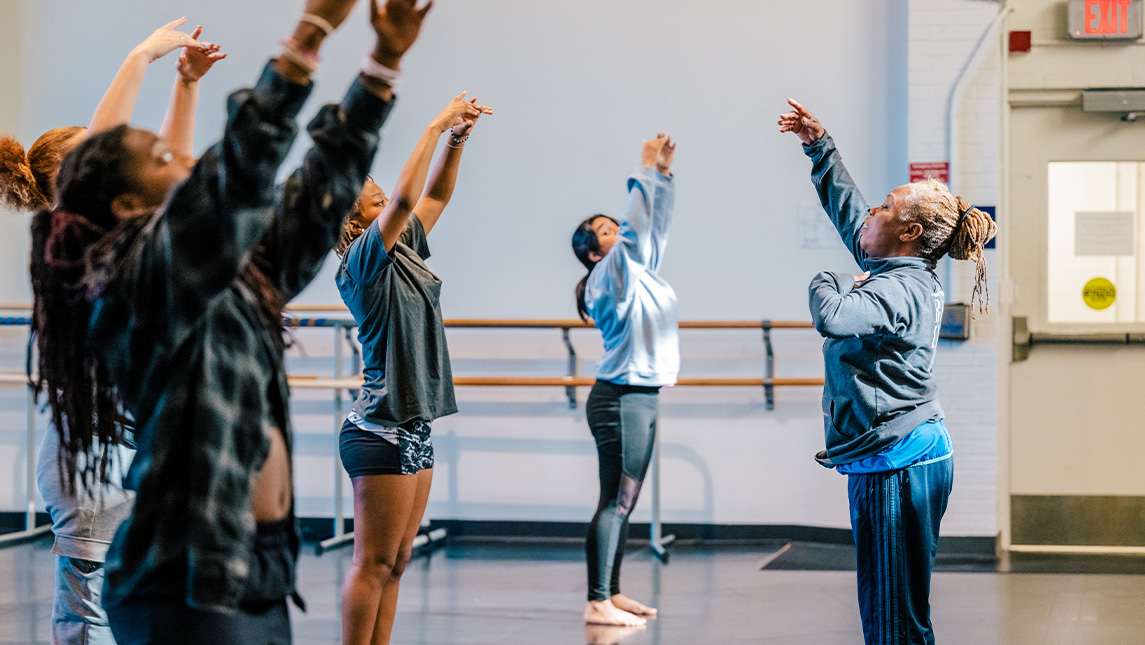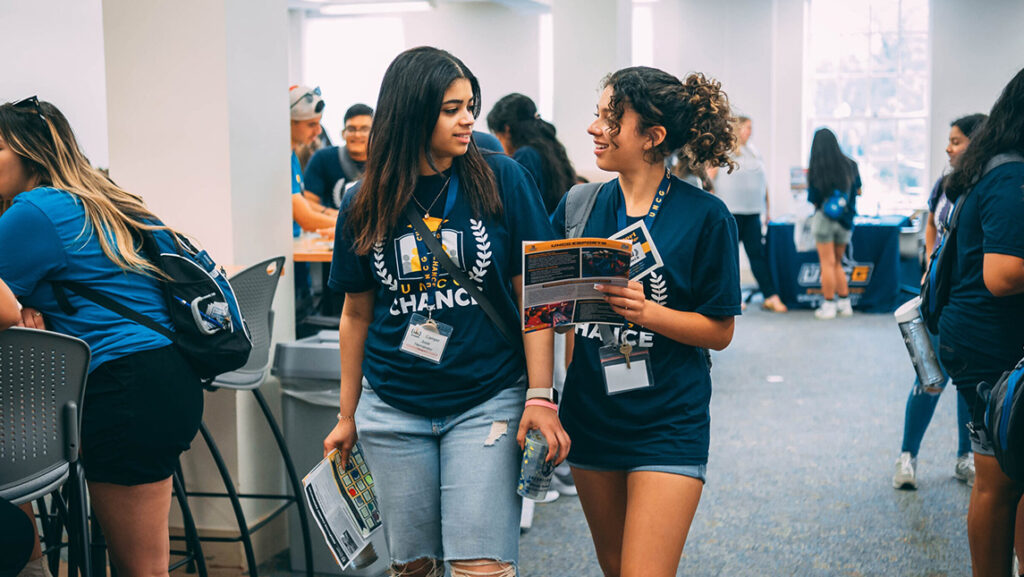UNC Greensboro Associate Professor Robin Gee has created many films – but her latest is personal – diving into the centennial of the suffragette movement from a unique perspective.
“As a woman of color, reconciling our participation in the suffragette movement, politically, socially, and culturally was problematic,” says Gee, who has been teaching in the UNCG School of Dance for 20 years. “The issues for women of color were different than other women.”
A PROBLEMATIC PAST
The 19th Amendment, ratified on August 18, 1920, granted American women the right to vote, but Black American women continued to face voting roadblocks such as poll taxes, literary tests, and violence. The early women’s rights movement was closely allied with the anti-slavery movement.
“The suffragette movement was not inclusive. So, for me to find my way into this system, I had to be okay with the fact that it was problematic,” says Gee.
Gee turned to “The Red Record,” a work by prominent Black journalist and activist Ida B. Wells. In the 1895 book, Wells made her case against lynching in the United States using mainstream white newspapers to document a resurgence of white mob violence. Through her writing Wells spearheaded the anti-lynching movement in the United States, exposing it as a tactic designed to maintain white supremacy and limit African-American opportunities for economic, social, and political power.
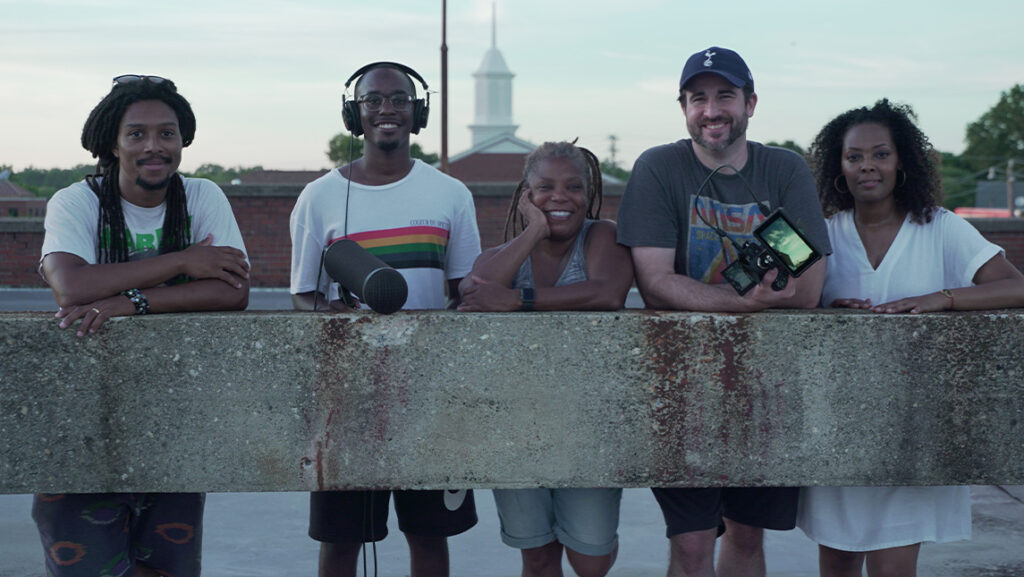
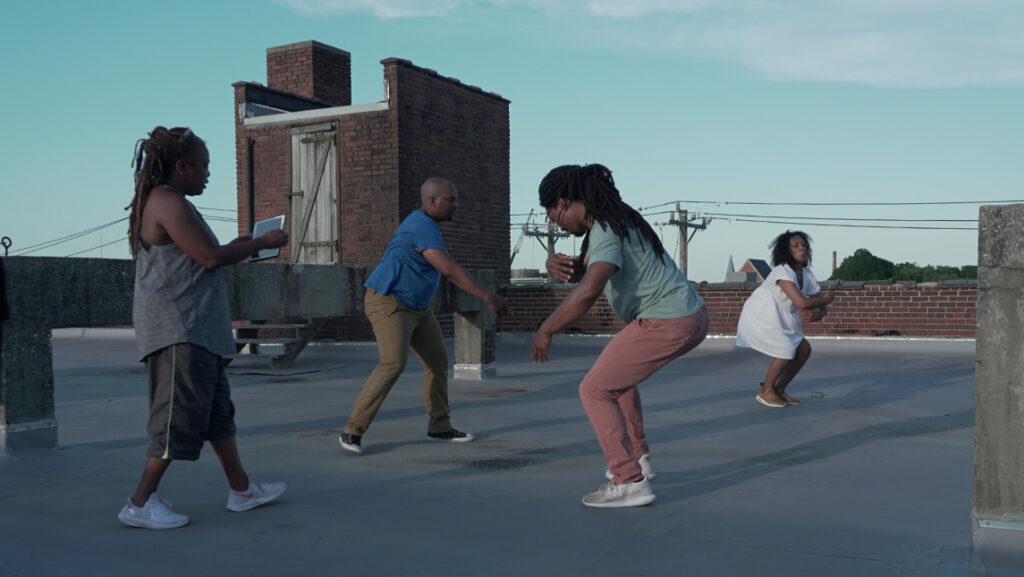
SHE CAN, WE CAN
Inspired by “The Red Record,” and Ida B. Well’s activism, Gee created an original film “What’s Bred in the Blood and Bone” was partially funded by a UNCG grant, “She Can, We Can: Beyond Women’s Suffrage Centennial,” in support of the University’s overall celebration of the 100th anniversary of the Women’s Suffrage movement in 2020.
“The work that I wanted to make was going to be rooted in Ida B. Well’s writing on this period of lynching and also look at notions of blood memory and how people of color experience them,” Gee says.
The film, as defined by Gee, is a study of space and place, girded by the collective experiences of brown bodies. The film explores “blood memory” as body memory and the ways in which collective experiences bind and fortify us as African Americans.
Blood memory, Gee says, is the idea of connection to the memories of one’s ancestors, especially among people of color: “There are things that we bring with us, these blood memories that we bring with us, and it’s important that we acknowledge and learn from them.”
INFINITELY COLLABORATIVE
Gee worked with Media Studies Professor Dr. Michael Frierson and lecturer Kevin Wells on the production, along with Assistant Professors of Dance Maurice Watson and Clarice Young, and masters of fine arts candidate Elijah Motley, with an original score by Atiba Rorie, dance music coordinator.
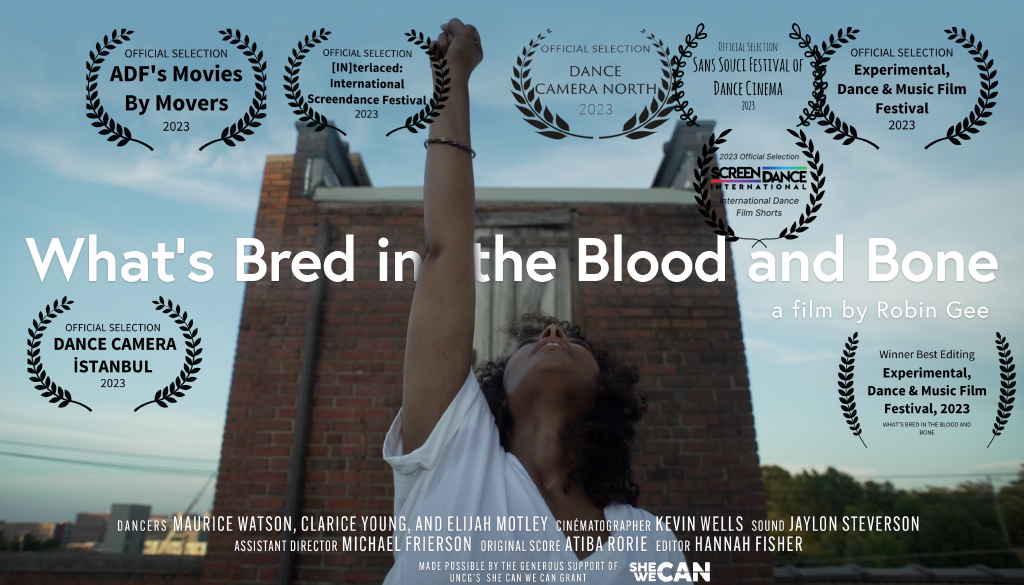
The film premiered at the American Dance Festival’s Movies by Movers on June 17, 2023 in Durham, North Carolina. The work has toured across the world, including in Los Angeles, Michigan and Stockholm and won the Best Editing category at Experimental Dance and Music Film Festival in Los Angeles. The film had its Greensboro premiere in August 2023 at Greensboro Project Space as part of the second screening of the Greensboro Dance Film Festival.
The process of creation and ideation was infinitely collaborative, involving dancers and filmmakers in the development of movement, landscape and cinematic construction,” Gee says. “We read Well’s book, journaled, and had in depth discussions to prepare for the process of developing a movement vocabulary that addresses the issues we wanted to highlight in the piece. We’re just all proud of it. It took a long time to come to fruition.”
Frierson and Gee previously taught a class around the intersection of dance and film but had not collaborated on a film.
“I love to shoot dance because the movement is mostly continuous, there’s a lot going on,” says Frierson. “When you start filming dancers, it’s very challenging to think about how you’re going to capture people moving in that space.”
SCREEN DANCE
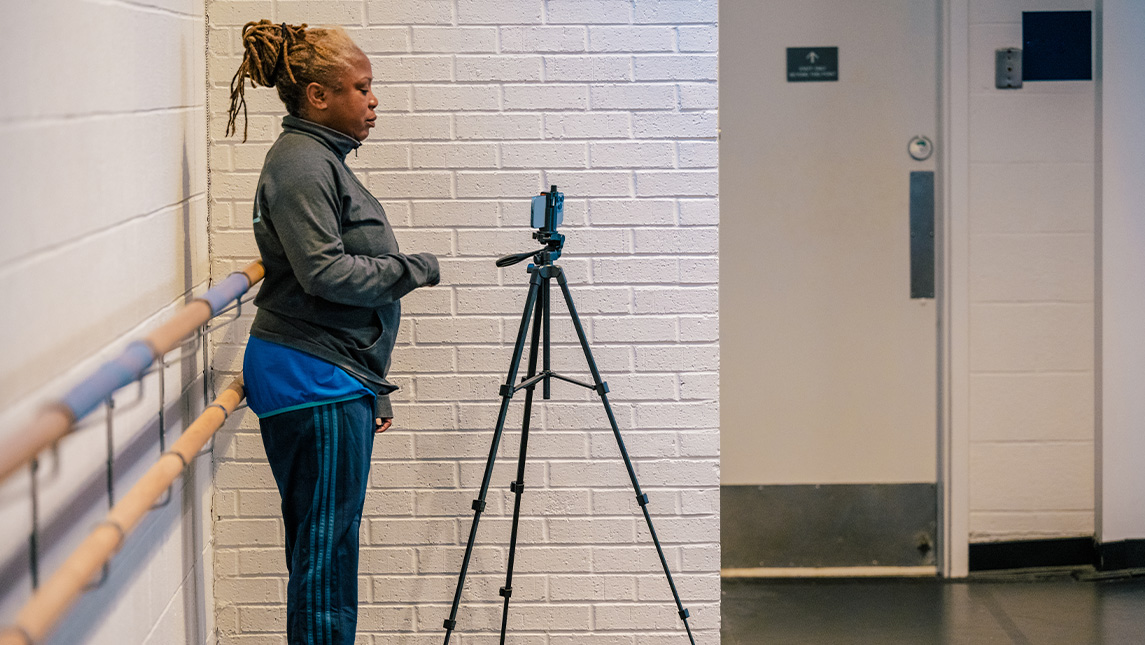
“What’s Bred in the Blood and Bone,” is a screen dance film – a hybrid art form that sits at the intersection of dance, film, and composition.
“It’s a way to tell stories and create work using the language of the cinema and employing the language of the body simultaneously,” says Gee. “It’s perfect for someone like me who has a background in both dance and film. I was always interested in filmmaking and writing about film and film theory.”
At UNCG, Gee teaches a course on the genre that she says is another way of helping students see the outcomes of the moving body.
Gee notes the COVID-19 pandemic led to more exploration of the genre on social media – like with the use of TikTok and Instagram – as people strived to communicate physically.
EXPLORING MOVEMENT
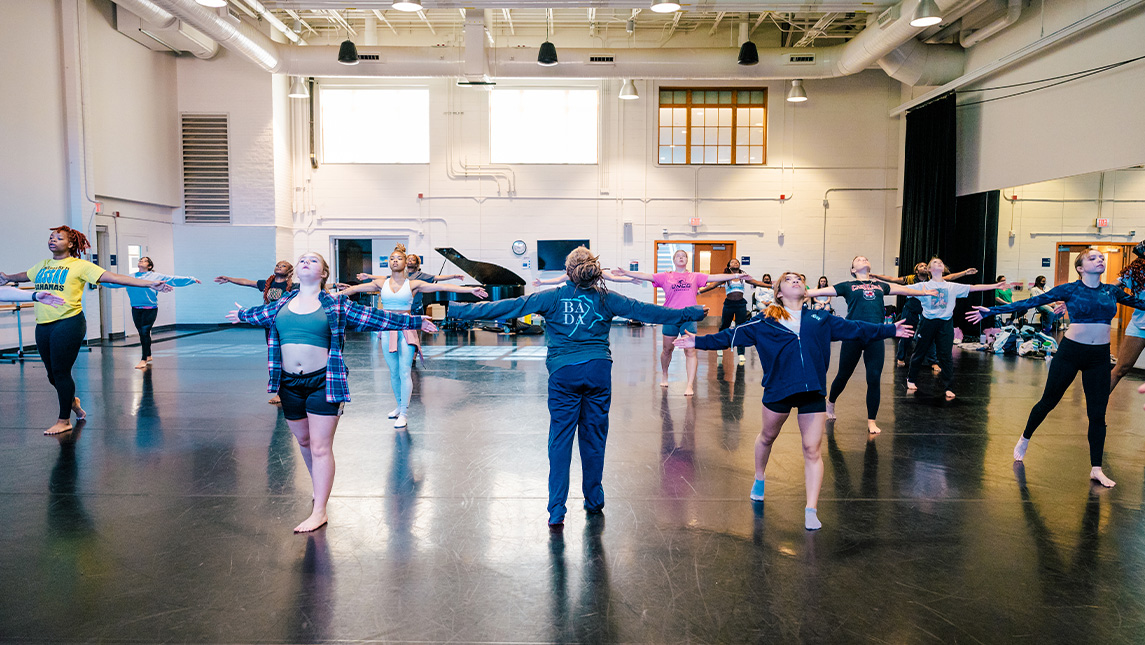
Without UNCG, Gee says she would not be able to explore this area of her work. The “She Can, We Can” grant is just one kind of support she’s had throughout the years. It’s allowed her to not only explore movement expressed in these new and innovative media, as well as how it can be captured on film. Her early research at UNCG was on digital media and documenting the dances of African communities.
“My interest shifted after seeing these creative outcomes just as a function of being out in the world with a camera, and creativity has always been supported by the university through research grants and initiatives,” Gee says.
She takes her findings into the classroom, creating even more possibilities for students.
“Dance students are film makers, composers, and performers simultaneously now,” says Gee. “That’s been very meaningful.”
Story by Avery Craine Powell, University Communications
Photography by Sean Norona, University Communications
Additional photography courtesy of Michael Frierson
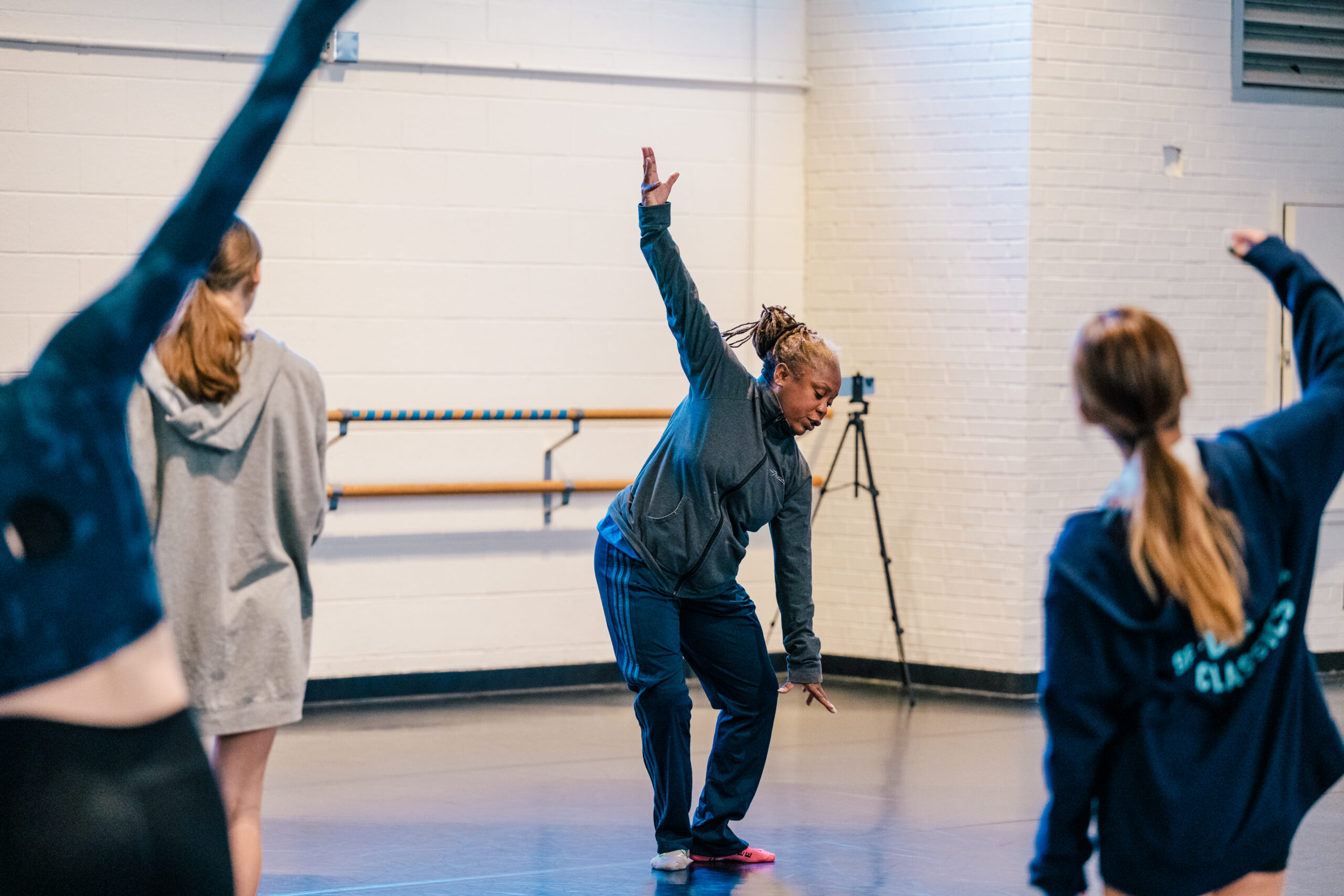
Let your body do the talking
